-
RESEARCH01-01-2017
Prevention of chronic complications of diabetes mellitus according to complexity
Revista Brasileira de Enfermagem. 2017;70(5):996-1003
Abstract
RESEARCHPrevention of chronic complications of diabetes mellitus according to complexity
Revista Brasileira de Enfermagem. 2017;70(5):996-1003
DOI 10.1590/0034-7167-2016-0080
Views0See moreABSTRACT
Objective:
To assess the prevention by primary health care providers of chronic complications of diabetes mellitus according to the complex thinking theoretical approach.
Method:
Evaluative research based on the complex thinking theoretical approach. The following techniques for data collection were used: interviews with 38 participants; observation in collective and individual appointments; and analysis of medical records of people with diabetes. The triangulation applied for data analysis was the ATLAS.ti software.
Results:
The prevention and management of chronic complications of diabetes did not meet the requirements set forth by ministerial public policies aimed at this population. Systematic monitoring to prevention of chronic complications showed significant gaps.
Final considerations:
Primary health care did not consider preventive actions for diabetes mellitus complications. This context was marked by disjunctive, fragmented, and dissociated practices types of care targeted to the totality of the assisted people.
-
RESEARCH01-01-2017
Job satisfaction in an oncology nursing team
Revista Brasileira de Enfermagem. 2017;70(5):988-995
Abstract
RESEARCHJob satisfaction in an oncology nursing team
Revista Brasileira de Enfermagem. 2017;70(5):988-995
DOI 10.1590/0034-7167-2016-0422
Views0See moreABSTRACT
Objective:
to identify the level of attributed, perceived and real job satisfaction of oncology nursing professionals and analyze the relationships between the levels of satisfaction among these workers.
Method:
a descriptive, quantitative cross-sectional study was conducted using the Index of Work Satisfaction (IWS) to evaluate the nursing team, nurses and technicians/auxiliaries. A total of 348 workers answered the questionnaire, of which 216 were fully completed and considered for the IWS calculation.
Results:
Autonomy was considered the most important item in attributed satisfaction for the nursing team and nurses. Salary was valorized most by the technicians/auxiliaries. For perceived satisfaction, Professional Status was the most important for all workers. Regarding real satisfaction, Interaction was the most important for the nursing team and technicians/auxiliaries; while the nurses valorized Autonomy. The nurses presented the greatest job satisfaction.
Conclusion:
a discrepancy was observed in job satisfaction among the oncology nurses, indicating the importance of further quantitative research.
-
RESEARCH01-01-2017
Relational technologies as instruments of care in the Family Health Strategy
Revista Brasileira de Enfermagem. 2017;70(5):981-987
Abstract
RESEARCHRelational technologies as instruments of care in the Family Health Strategy
Revista Brasileira de Enfermagem. 2017;70(5):981-987
DOI 10.1590/0034-7167-2016-0337
Views1See moreABSTRACT
Objective:
This article aims to identify the relational technologies used by Family Health Strategy nurses in their daily work when treating patients.
Method:
Descriptive and cross-sectional study with qualitative approach; conducted between May and July 2015, in three Basic Health Units of the Southern Region of the Municipality of São Paulo, with 19 nurses of the Family Health Strategy. Data were collected through a semi-structured interview, and the speeches were fully transcribed and analyzed according to the technique of content analysis.
Results:
From the speeches of the participants, three categories emerged, showing the unawareness of the concept, but the valorization of its use; which are the relational technologies used by the participating nurses (communication, listening, empathy and welcoming reception), as well as the report of barriers to the use of relational technologies.
Final consideration:
Although the nurses value the use of relational technologies, the participants denoted unawareness of the nomenclature and its associated concepts, suggesting superficiality in the understanding and use of these instruments in the context of care in the Family Health Strategy.
-
RESEARCH01-01-2017
Knowledge and practice in mental health nursing care
Revista Brasileira de Enfermagem. 2017;70(5):973-980
Abstract
RESEARCHKnowledge and practice in mental health nursing care
Revista Brasileira de Enfermagem. 2017;70(5):973-980
DOI 10.1590/0034-7167-2016-0343
Views0See moreABSTRACT
Objective:
To understand mental health nursing care based on the concept of the subject of the unconscious proposed by Lacan.
Method:
A narrative study was carried out with 19 nurses, chosen based on their theoretical approach or referral by other participants, through the snowball sampling technique. The interviews were carried out in person or digitally, and were recorded and fully transcribed.
Results:
The analysis was carried out based on Freudian and Lacanian psychoanalysis, approaching nursing care as it acts on the body, secretions, and excretions, to distinguish it from the spirit of fineness. Effects on care are discussed, considering the subject of the unconscious with its knowledge, creating unique exits (sinthome). In this situation, professionals are required to abstain from a position of knowing what is better for the Other.
Final considerations:
This nursing care perspective offers contributions when discussing the centrality of the subject and words in the care process.
-
RESEARCH01-01-2017
Weaving the West Psychosocial Care Network of the municipality of São Paulo
Revista Brasileira de Enfermagem. 2017;70(5):965-972
Abstract
RESEARCHWeaving the West Psychosocial Care Network of the municipality of São Paulo
Revista Brasileira de Enfermagem. 2017;70(5):965-972
DOI 10.1590/0034-7167-2016-0566
Views0See moreABSTRACT
Objective:
to understand how health service professionals involved in the care of users in psychic distress perceive the organization of the Psychosocial Care Network (RAPS – Rede de Atenção Psicossocial) in the western region of the city of São Paulo.
Method:
qualitative approach study conducted with 123 professionals with higher education who work in the care points of the network. A semi-structured interview was performed and data were submitted to the Alceste program for lexical analysis.
Results:
the network is in process of alignment with the mental health policy and the psychosocial rehabilitation strategy. However, the weaknesses in the work process of teams are related to deficits in human resources, structure, and communication, and to the limited appropriation of their guidelines.
Final considerations:
there are intense efforts of workers to weave the network, and barriers need to be overcome to support successful actions in mental health care in the territory.
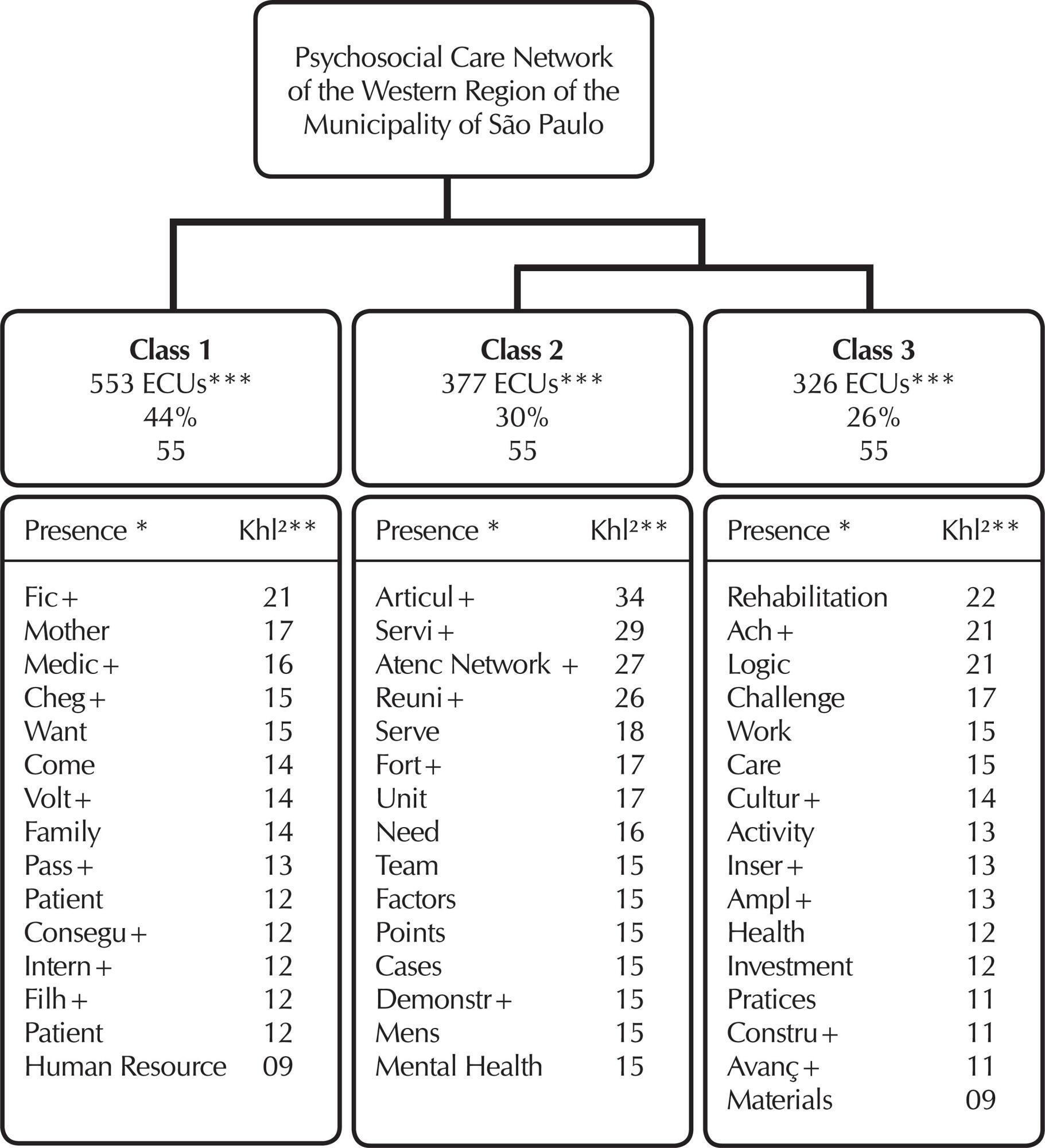
-
RESEARCH01-01-2017
Chronotype and work shift in nursing workers of university hospitals
Revista Brasileira de Enfermagem. 2017;70(5):958-964
Abstract
RESEARCHChronotype and work shift in nursing workers of university hospitals
Revista Brasileira de Enfermagem. 2017;70(5):958-964
DOI 10.1590/0034-7167-2016-0542
Views0See moreABSTRACT
Objective:
To identify the predominant chronotype in nursing workers who work in surgical clinics of university hospitals and to verify the association with work shift.
Method:
Cross-sectional study, performed in surgical clinics of university hospitals in the Southern region of Brazil. The sample of 270 nursing workers answered questions of socio-occupational characterization, of health and the Morningness-Eveningness Questionnaire of Horne and Östberg. We performed a descriptive and bivariate analysis with the help of the SPSS software and confidence interval of 95%.
Results:
The indifferent chronotype predominated (45.2%). There were significant differences between occupational categories and variables “age” (p<0.001), “use of medication” (p=0.035) and “choice of work shift” (p=0.001). There was an association between the chronotype and the variables “work leave due to illness” (p=0.021), “children” (p=0.025), “use of medication” (p=0.018) and “work shift” (p=0.001).
Conclusion:
The chronotype remained indifferent, and the results confirmed association between chronotype and work shift.
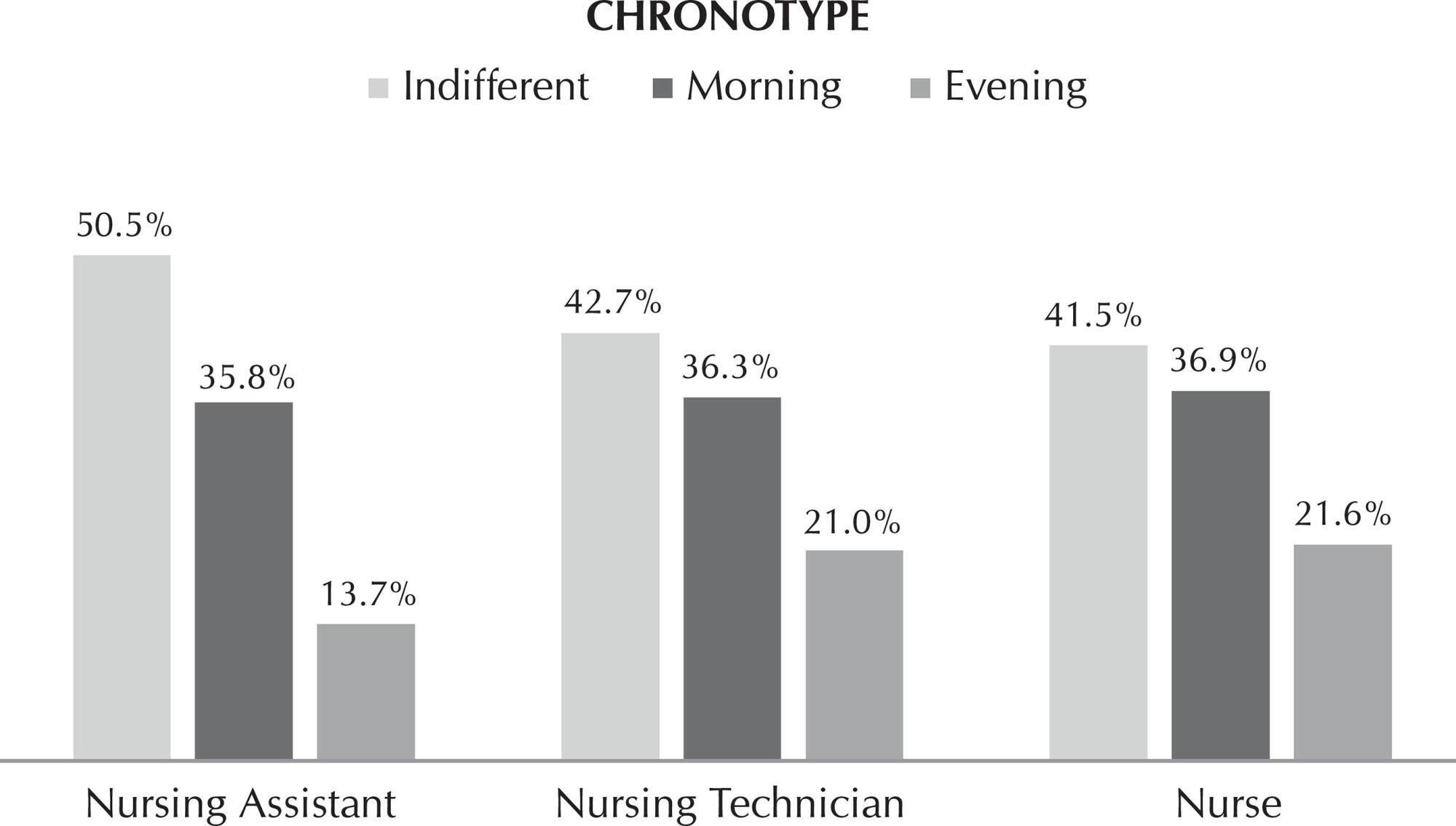
-
RESEARCH01-01-2017
Difficulties in nutritional counseling and child growth follow-up: from a professional perspective
Revista Brasileira de Enfermagem. 2017;70(5):949-957
Abstract
RESEARCHDifficulties in nutritional counseling and child growth follow-up: from a professional perspective
Revista Brasileira de Enfermagem. 2017;70(5):949-957
DOI 10.1590/0034-7167-2016-0527
Views0See moreABSTRACT
Introduction:
Nutritional counseling and growth follow-up are priorities when providing care to children; however, these have not been completely incorporated into primary health care.
Objective:
To know the difficulties for providing nutritional counseling and child growth follow-up, from a professional healthcare perspective.
Method:
Qualitative study, using Donabedian as theoretical framework, developed by 53 professionals in the field of primary health care. Data was obtained from focal groups and submitted to content analysis.
Results:
The main difficulties for nutritional counseling were clustered in the category of ‘perceptions and beliefs related to child feeding’. The ‘problems of infrastructure and healthcare’ and ‘maintenance of the hegemonic medical model’ are the main difficulties for following-up growth.
Final considerations:
Besides investments in infrastructure, healthcare training is indispensable considering beliefs and professional experiences, so in fact, nutritional counseling and child growth follow-up are incorporated in primary health care.
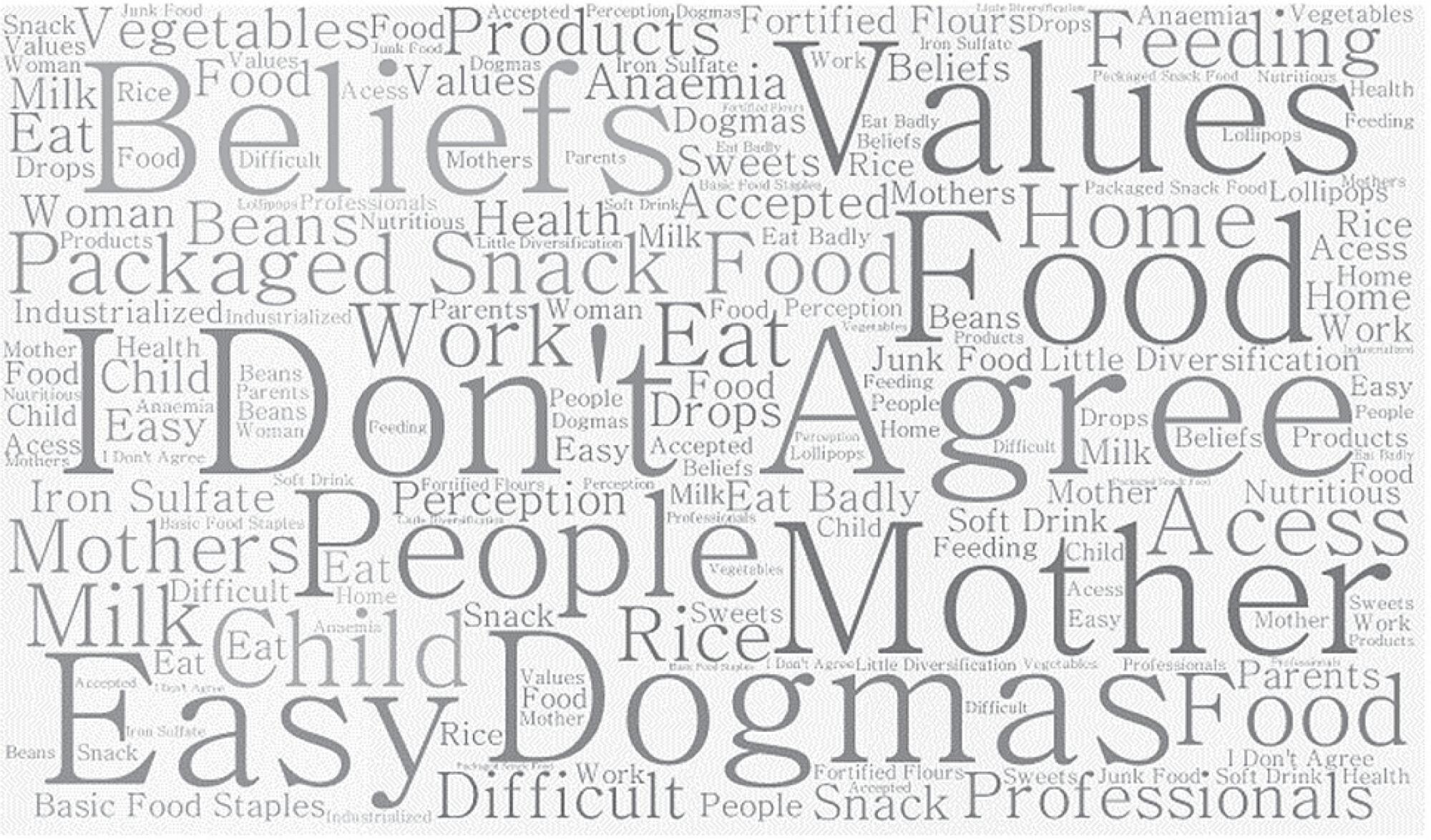
-
RESEARCH01-01-2017
Severity and workload related to adverse events in the ICU
Revista Brasileira de Enfermagem. 2017;70(5):942-948
Abstract
RESEARCHSeverity and workload related to adverse events in the ICU
Revista Brasileira de Enfermagem. 2017;70(5):942-948
DOI 10.1590/0034-7167-2016-0427
Views0See moreABSTRACT
Objective:
To analyze whether an increase in patient severity and nursing workload are correlated to a greater incidence of adverse events (AEs) in critical patients.
Method:
A prospective single cohort study was performed on a sample of 138 patients hospitalized in an intensive care unit (ICU).
Results:
A total of 166 AEs, occurred, affecting 50.7% of the patients. Increased patient severity presented a direct relationship to the probability of AEs occurring. However, nursing workload did not present a statistically significant relationship with the occurrence of AEs.
Conclusion:
The results cast light on the importance of using evaluation tools by the nursing personnel in order to optimize their daily activities and focus on patient safety.
-
REFLECTION02-22-2021
Convergent care research and its qualification as scientific research
Revista Brasileira de Enfermagem. 2021;74(1):e20190657
Abstract
REFLECTIONConvergent care research and its qualification as scientific research
Revista Brasileira de Enfermagem. 2021;74(1):e20190657
DOI 10.1590/0034-7167-2019-0657
Views0See moreABSTRACT
Objectives:
to highlight the main attributes of Convergent Care Research that ratify it as a method of scientific research. Methods: it is a theoretical-reflective study on Convergent Care Research’s theoretical-methodological assumptions. Development: Convergent Care Research is compatible with the Social Constructionism paradigm. Convergent Care Research projects have two approaches: practical and conceptual. The Convergent Care Research process corpus contains five phases: conception; instrumentation; scrutiny; analysis and theorizing. Final Considerations: Convergent Care Research rigor encompasses the relationship between research and care practice, and this corresponds to the convergence of these two dimensions. Due to its theoretical foundation and criteria of methodological rigor, Convergent Care Research is aligned with scientific research methods.
-
07-05-2021
Factors associated with urinary tract infection in a Nursing Home
Revista Brasileira de Enfermagem. 2021;74:e20200813
Abstract
Factors associated with urinary tract infection in a Nursing Home
Revista Brasileira de Enfermagem. 2021;74:e20200813
DOI 10.1590/0034-7167-2020-0813
Views1See moreABSTRACT
Objective:
to analyze the factors associated with urinary tract infection occurrence in institutionalized elderly.
Methods:
this is a cross-sectional, analytical, quantitative study with 116 elderly people from a Nursing Home. Urinary tract infection diagnosis was carried out through urine culture and clinical assessment. Demographic data and associated factors were obtained from medical records. Statistical analysis included bivariate analysis and logistic regression models.
Results:
the factors associated with urinary tract infection (p<0.05) were being female; wheelchair user; diaper use; diuretic use; urinary and bowel incontinence; type 1 diabetes; benign prostatic hyperplasia; dehydration.
Conclusion:
this study revealed that it is important to consider non-modifiable factors such as sex and clinical comorbidities; however, dehydration, a modifiable factor, increased the chances of developing urinary tract infections by 40 times among institutionalized elderly and demands greater attention from the health team.
-
ORIGINAL ARTICLE05-24-2021
Content validation of an educational booklet for asthma control and management in children
Revista Brasileira de Enfermagem. 2021;74:e20200353
Abstract
ORIGINAL ARTICLEContent validation of an educational booklet for asthma control and management in children
Revista Brasileira de Enfermagem. 2021;74:e20200353
DOI 10.1590/0034-7167-2020-0353
Views0See moreABSTRACT
Objective:
to validate the content and appearance of the educational booklet “You can control your child’s asthma – let’s learn together?” with parents and caregivers of children with asthma.
Methods:
this is a methodological study, carried out with 34 mothers and caregivers of children, from two to 10 years old, diagnosed with asthma. The educational booklet validation was performed using Content Validity Index (CVI) and assessment of comprehension, attractiveness, self-efficacy, persuasion, and cultural acceptance domains.
Results:
the booklet was considered clear (99.8%) and relevant (100%), with a global CVI of 0.99. Domain assessment proved to be an easy-to-understand tool, culturally appropriate, attractive, with persuasive power and promoting self-efficacy.
Conclusion:
the booklet is valid and adequate for promoting the self-efficacy of parents and caregivers in childhood asthma control and management, potentially scalable to other realities of outpatient care.
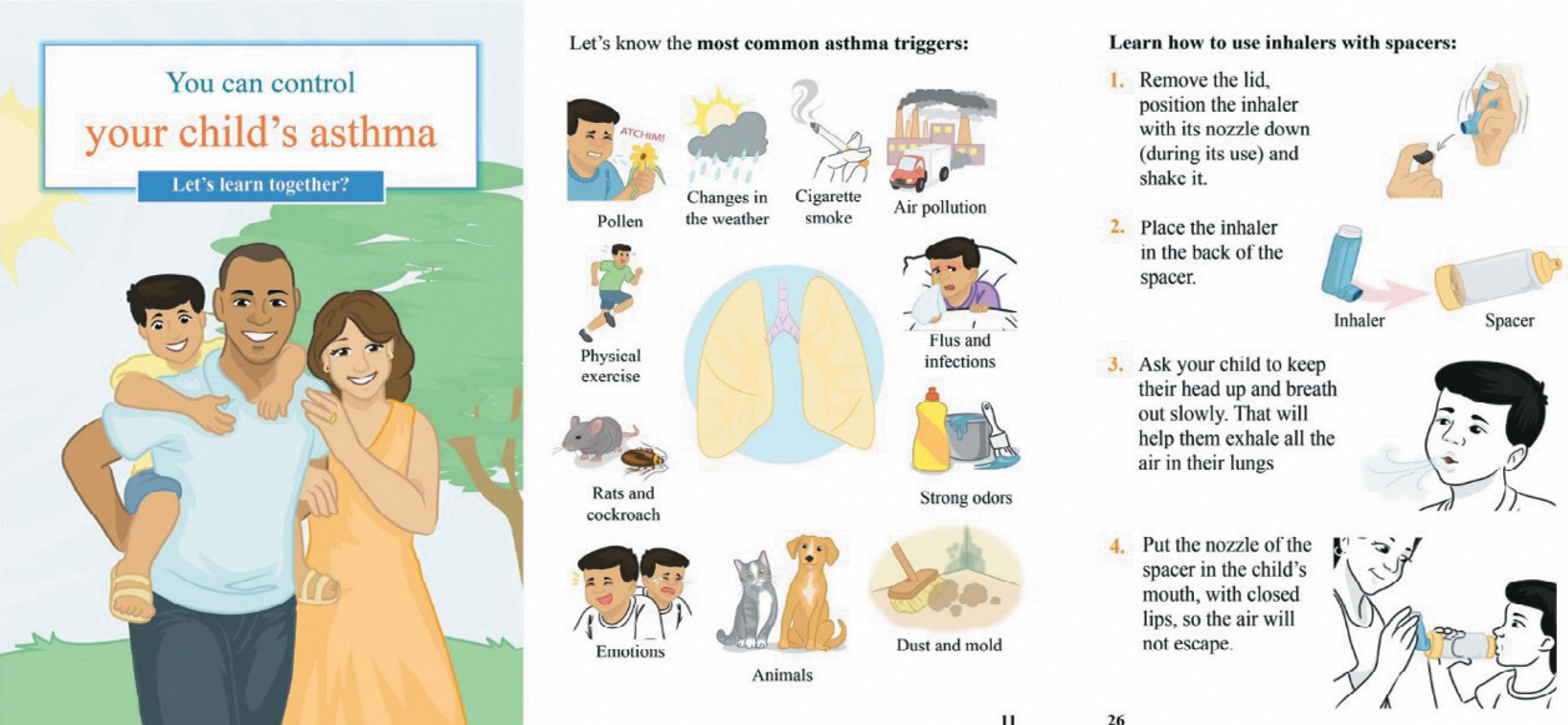
-
REVIEW10-05-2020
Self-efficacy of health professionals in hand hygiene practice: is it possible to measure?
Revista Brasileira de Enfermagem. 2020;73:e20190873
Abstract
REVIEWSelf-efficacy of health professionals in hand hygiene practice: is it possible to measure?
Revista Brasileira de Enfermagem. 2020;73:e20190873
DOI 10.1590/0034-7167-2019-0873
Views0See moreABSTRACT
Objective:
To identify in the literature the tools used to measure self-efficacy of health professionals in hand hygiene.
Methods:
Integrative literature review carried out by consulting the databases PubMed, Scopus, Web of Science, Cumulative Index to Nursing and Allied Health Literature, Europe PubMed Central, and Science Direct using the descriptors Self Efficacy, Hand Hygiene, and Health Personnel.
Results:
Six articles, all of which with observational design, were selected. It was possible to infer that four studies used validated instruments to measure self-efficacy of health professionals in the conformity with the recommendations for hand hygiene. The other studies used questionnaires that were not validated.
Final considerations:
Despite the extensive literature on hand hygiene, there is a lack of scientific evidence regarding the use of validated instruments to measure self-efficacy of health professionals in the procedure. The use of properly validated psychometric instruments is useful to guarantee the quality of results in studies.
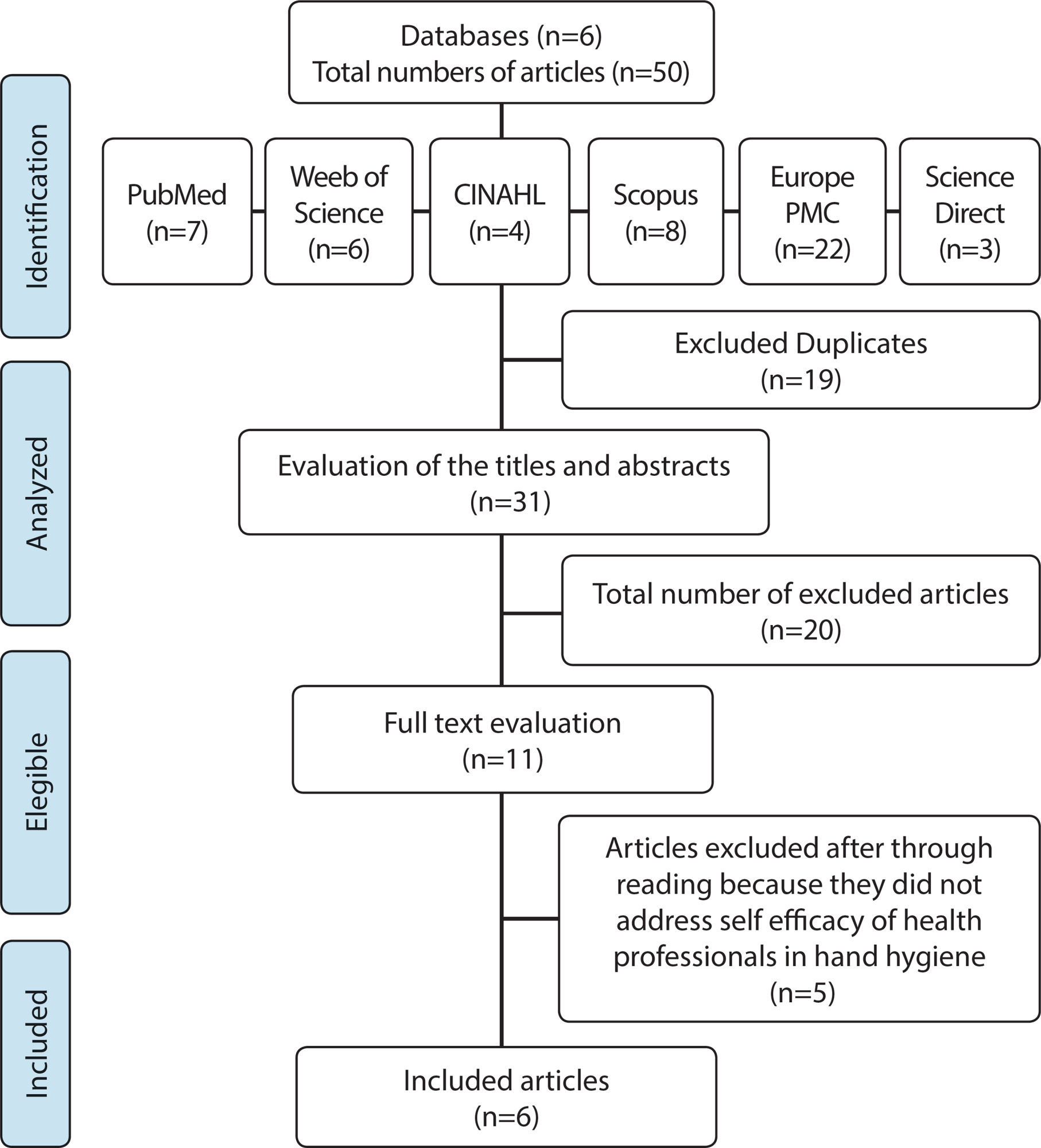
-
ORIGINAL ARTICLE07-01-2020
Obstetric analgesia in labor and its association with neonatal outcomes
Revista Brasileira de Enfermagem. 2020;73(5):e20180757
Abstract
ORIGINAL ARTICLEObstetric analgesia in labor and its association with neonatal outcomes
Revista Brasileira de Enfermagem. 2020;73(5):e20180757
DOI 10.1590/0034-7167-2018-0757
Views0See moreABSTRACT
Objetive:
To investigate the association between analgesia during labor and occurrence of neonatal outcomes.
Method:
Retrospective cohort study with medical records of 850 parturient. The exposure variable of interest was receiving pharmacological analgesia during labor and neonatal outcomes were: one- and five-minute Apgar, resuscitation maneuvers and referral of the newborn to Neonatal ICU. A logistic regression was carried out to obtain Odds Ratios and 95% confidence interval, with adjustment for confounding factors.
Results:
Among the women studied, 35% received analgesia and this use was associated with a greater chance of neonatal outcomes such as one-minute Apgar < 7 (p <0.0001), resuscitation maneuvers (p <0.001) and referral to the Neonatal ICU (p = 0.004), mostly were among low-risk pregnant women, even after adjustments.
Conclusion:
The use of pharmacological analgesia during labor is associated with one-minute Apgar < 7, resuscitation maneuvers and referral to the Neonatal ICU.
-
10-01-2022
Benchmarking of mobile apps on heart failure
Revista Brasileira de Enfermagem. 2022;75(1):e20201093
Abstract
Benchmarking of mobile apps on heart failure
Revista Brasileira de Enfermagem. 2022;75(1):e20201093
DOI 10.1590/0034-7167-2020-1093
Views0INTRODUCTIONHeart failure (HF) is an emerging global threat, with a current prevalence of 64.34 million cases on the planet (8.52 per 1,000 inhabitants), representing 9.91 million years lost due to disability and spending of US$346.17 billion(), with a prospect of an increase despite therapeutic advances. These data alert to the prioritization of preventive actions and […]See more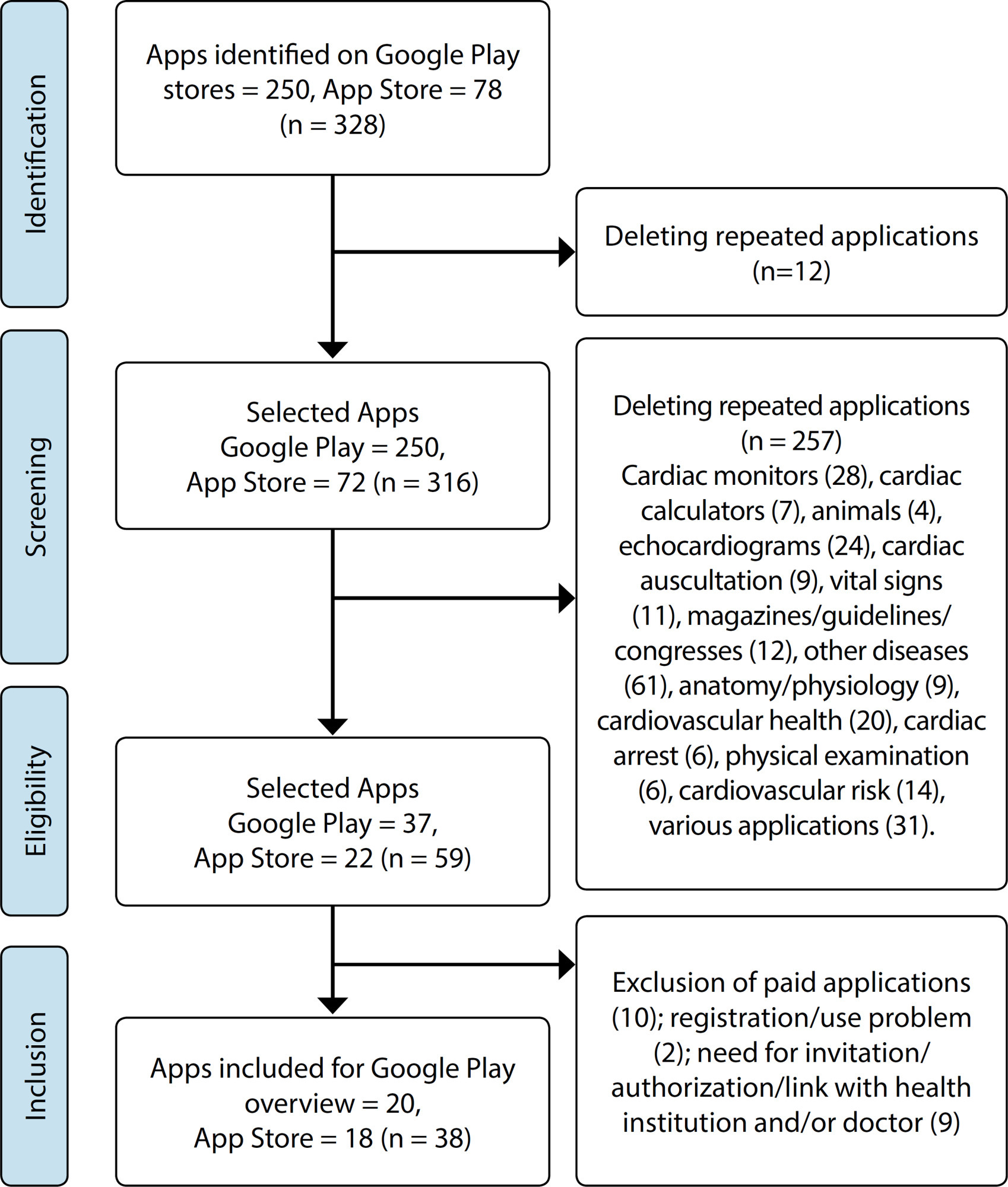
-
ORIGINAL ARTICLE07-08-2020
Nurses’ practice in quilombola communities: an interface between cultural and political competence
Revista Brasileira de Enfermagem. 2020;73(5):e20190433
Abstract
ORIGINAL ARTICLENurses’ practice in quilombola communities: an interface between cultural and political competence
Revista Brasileira de Enfermagem. 2020;73(5):e20190433
DOI 10.1590/0034-7167-2019-0433
Views1See moreABSTRACT
Objectives:
to understand Family Health Strategy nurses’ practices in the context of quilombola communities with an interface for cultural and political competences.
Methods:
a single integrated, qualitative case study carried out on seven Family Health Strategies located in the Metropolitan Region of Belo Horizonte, state of Minas Gerais. Seven nurses and 59 quilombolas participated. Data were collected through individual interviews with nurses, collective interviews with quilombolas and observation. For analysis, the thematic content analysis was adopted.
Results:
the results revealed structural and territorial problems, which are configured as barriers for professional-user encounter as well as for professional practice performance.
Final Considerations:
it is necessary that Family Health Strategy nurses, based on political and cultural competences, create strategies that minimize the difficulties found in the implementation of health actions directed to quilombolas. Such strategies anchored in inclusive public policies.
-
ORIGINAL ARTICLE08-19-2019
Health promotion by nursing technicians from the nurses’ perspective
Revista Brasileira de Enfermagem. 2019;72(4):979-987
Abstract
ORIGINAL ARTICLEHealth promotion by nursing technicians from the nurses’ perspective
Revista Brasileira de Enfermagem. 2019;72(4):979-987
DOI 10.1590/0034-7167-2018-0552
Views0See moreABSTRACT
Objective:
to analyze education and practice of nursing technicians in health promotion, from the perspective of teaching nurses of technical course and Primary Health Care nurses.
Method:
an exploratory study with qualitative data analysis, carried out in the city of São Paulo, through semi-structured interviews with nine public technical professors and 16 nurses from the basic health network. Data thematic analysis was carried out.
Results:
three thematic categories have emerged: Conceptions and experiences on health promotion; Nursing technician’s practice in health promotion; and Nursing technician education on health promotion.
Final considerations:
it is necessary to review the centrality given to technicalism in the education and practice of nursing technicians, contemplating the health promotion and seeking the development of professional competence for the construction of transformative practices aimed at valuing the autonomy and proactivity of the people in health and quality of life production.
Search
Search in:
Nuvem de Tags
Adolescente (85) Atenção Primária à Saúde (239) COVID-19 (91) Criança (91) Cuidados de Enfermagem (269) Educação em Enfermagem (151) Educação em Saúde (139) Enfermagem (930) Enfermagem Pediátrica (86) Estudantes de Enfermagem (77) Estudos de Validação (131) Família (87) Idoso (208) Promoção da Saúde (99) Qualidade de Vida (104) Saúde do Trabalhador (86) Saúde Mental (145) Saúde Pública (82) Segurança do Paciente (150) Tecnologia Educacional (100)



